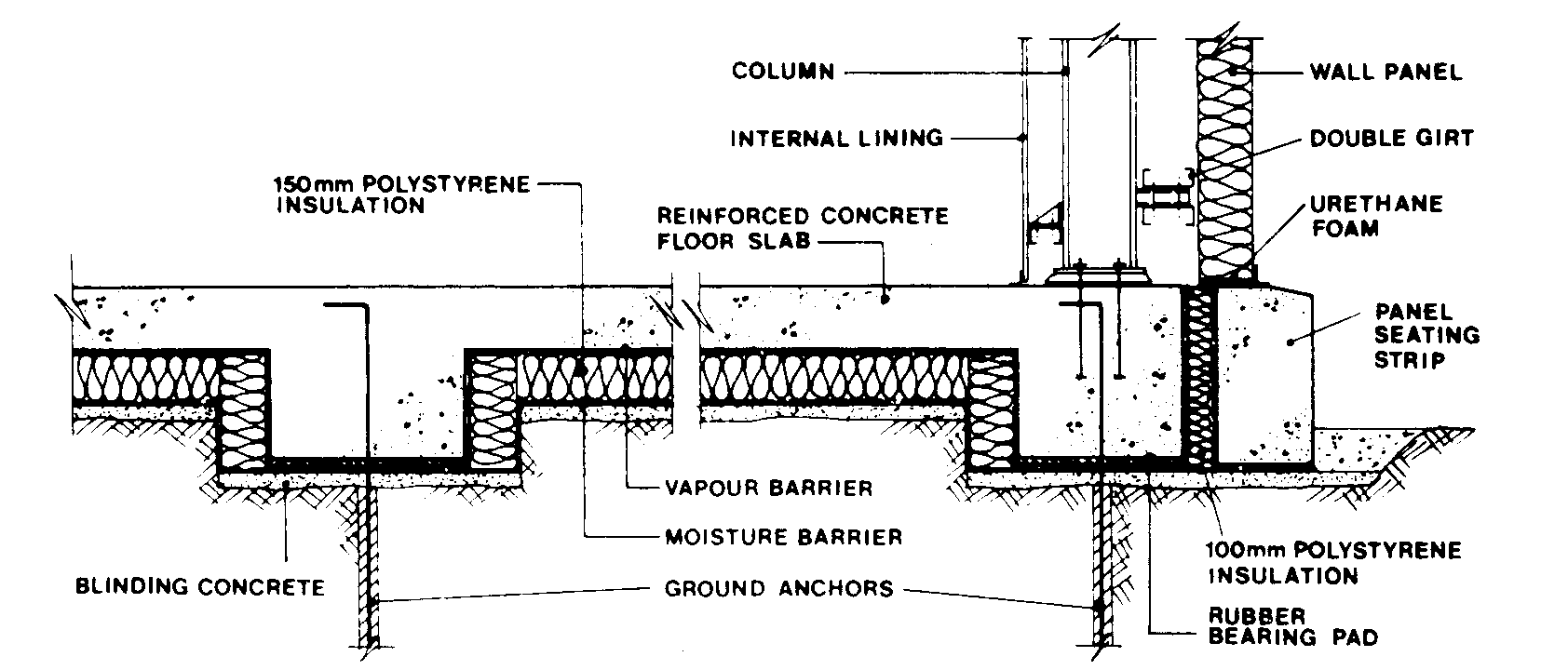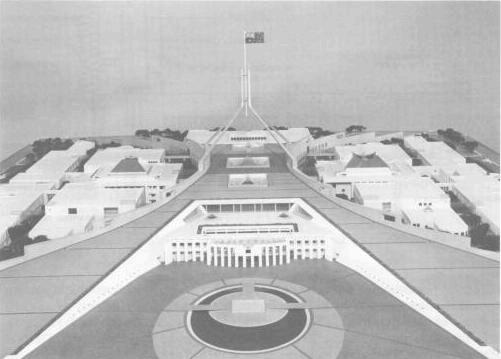


Chapter 6
I Construction During The Settlement Years
II The Use Of Timber As A Structural Material
III Structural Steel
IV Concrete Technology
V Housing
VI Industrialised Pre-cast Concrete Housing
VII Ports And Harbours
VIII Roads
IX Heavy Foundations
X Bridges
XI Sewerage
XII Water Engineering
XIII Railways
XIV Major Buildings
XV Airports
XVI Thermal Power Stations
XVII Materials Handling
XVIII Oil Industry
XIX The Snowy Mountains Scheme
XX The Sydney Opera House
XXI The Sydney Harbour Bridge
XXII Hamersley Iron
XXIII North West Shelf
Sources and References
Index
Search
Help
Contact us


Some vital statistics on New Parliament House
- Site:
- The site has a diameter of 640 metres.
- Structure:
- The complex covers about 250,000 square metres, of which 75,000 square metres is usable area.
- Concrete:
- The structure required 210,000 cubic metres of concrete, 24,000 tonnes of steel reinforcing rod and 610,000 square metres of formwork.
- Flagmast:
- The flag flies 81 metres above the roof of Parliament House. The Flagmast weighs approximately 220 tonnes, making it one of the biggest stainless steel structures in the world.
- No. of rooms:
- 4,500 rooms accommodating some 3,500 people.
- Public Gallery:
- The Public Gallery will seat more than 1,000 people.

 |
Australian Academy of Technological Sciences and Engineering |  |
© 1988 Print Edition pages 389 - 390, Online Edition 2000
Published by Australian Science and Technology Heritage Centre, using the Web Academic Resource Publisher
http://www.austehc.unimelb.edu.au/tia/388_image.html